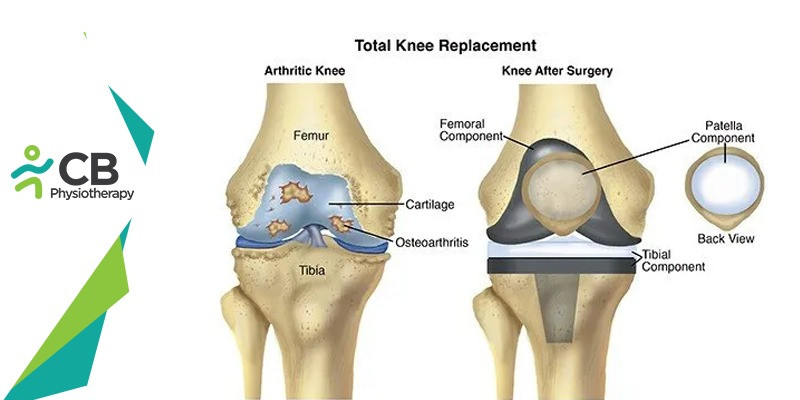The most common questions asked by the patients after the knee replacement are, what is the expected time of recovery? or when can I get back to work? Or when can I start driving? Etc. The answer to these questions is that there is no absolute way to tell how quickly a patient will respond. There is no way to tell what kind of challenges he will face but typically after knee replacement surgery, most people would be expected to return to work between 6 - 12 weeks post-surgery. After knee replacement surgery the patients are encouraged to keep themselves as active as possible and therefore bed rest is discouraged. Certainly, the whole aim of knee replacement surgery is to keep people active by alleviating their pain and a key part of that is their rehabilitation which helps them to achieve an optimum range of movement, muscle tone, strength, and general level of fitness so that they can live active lives. Physiotherapy is a part of rehabilitation after knee replacement. One of the main risks after the replacement is stiffness and loss of range of movement in the joint. Your physiotherapist designs an exercise program that helps the patient to prevent such risks.
Given below are some general easy-to-do knee replacement exercises that require less effort and can be done easily by the patient:
1. Ankle pumps:
While lying on the bed over your back. Keep your knees extended, bend your ankle up and down as far as you can, and repeat with the other leg.
2. Knee press:
While sitting on the bed, keep your legs straight. Keep a towel roll under your ankle, and press down by contracting your thigh muscle. Hold for 10 seconds, relax and repeat with the other leg.
3. Heel slides:
While lying on the bed over your back with your knees extended, place the foot on the surface, slowly slide your heel towards your buttock and then take it back to the starting position. Repeat with another leg.
4. Straight leg raise:
While lying on your back with your healthy leg bent and your foot flat on the surface, tighten your thigh and lift your involved leg to 300 keeping the knee straight. Repeat with the other leg.
5. Sitting knee extension:
While sitting in a chair, put another chair in front, put your operated knee on the chair straighten the knee, and hold for 10 seconds. Repeat with another leg.
6. Side-lying abduction:
While lying flat on the healthy leg bend your leg forward and raise the operated leg up to 300 and then bring it back to starting position. Repeat with the other leg.
7. Knee bending:
While standing hold on to a supportive surface, and bend your operated knee so that your foot touches your buttock, without twisting your knee. Then perform with your uninvolved leg.
8. Hip bending:
While standing hold onto a supportive surface, lift your knee by bending at the hip and knee, and bring it towards your shoulder. Repeat with your involved leg.
9. Hip abduction:
While standing hold onto a supportive surface, and bring your operated leg out. Repeat with your healthy leg.
10. Hip extension:
While standing hold on to a supportive surface, keeping your knee straight take your operated leg backward. Then repeat with your healthy leg.
11. Heel raises:
While standing hold onto a supportive surface, and lift both heels off the ground. Hold for 10 seconds and then slowly return to the starting position.
12. Knee bend:
While sitting in a chair with your healthy leg crossed in front of your operated ankle, push your operated foot backward, assisting with the bending of the knee. Hold for 10 seconds.
Initially, the patient uses a walker and then a cane, from the third week there is an increase in strength, endurance, and range of motion. The two weeks after knee replacement is probably the most challenging ones. Always follow the special instructions of your surgeon or physiotherapist to get back to work.

